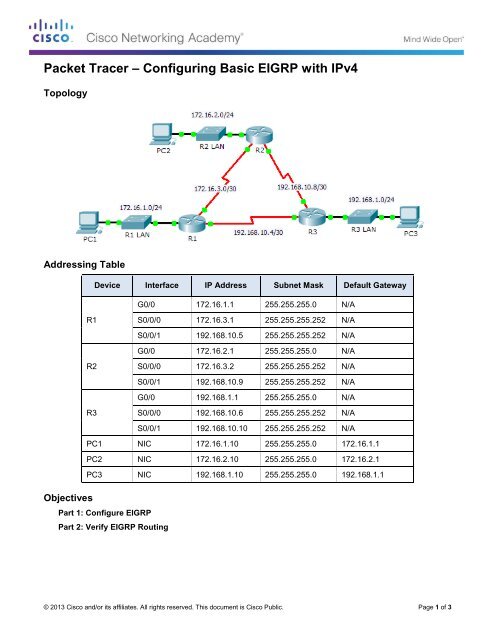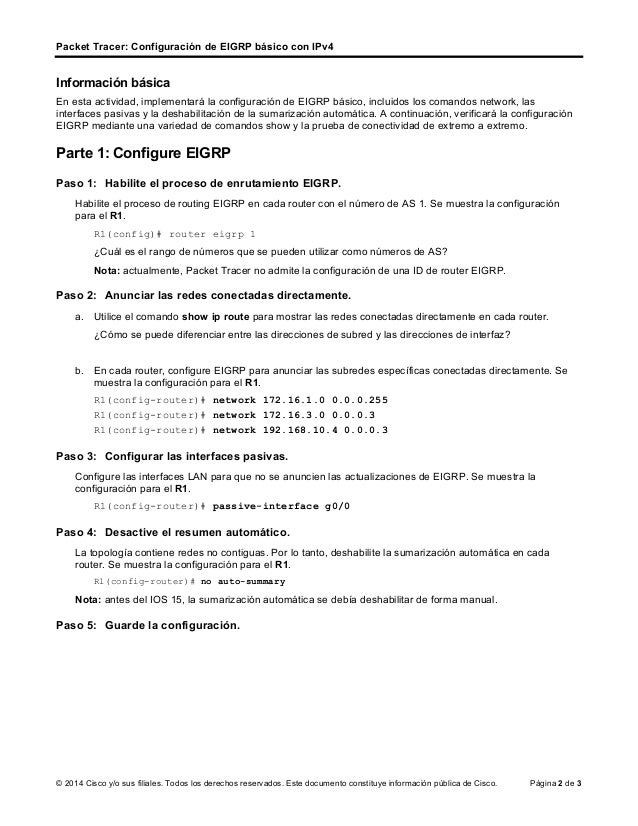
The configuration for R1 is shown.R1(config-router)# no auto-summaryNote: Prior to IOS 15 auto-summary had to be manually disabled. Therefore, disable automatic summarization on each router. The configuration for R1 is shown.R1(config-router)# passive-interface g0/0Disable automatic summarization.The topology contains discontiguous networks. The configuration for R1 is shown.R1(config-router)# network 172.16.1.0 0.0.0.255R1(config-router)# network 172.16.3.0 0.0.0.3R1(config-router)# network 192.168.10.4 0.0.0.3Configure passive interfaces.Configure the LAN interfaces to not advertise EIGRP updates. How can you tell the difference between subnet addresses and interface addresses?_On each router, configure EIGRP to advertise the specific directly connected subnets. The configuration for R1 is shown.R1(config)# router eigrp 1What is the range of numbers that can be used for AS numbers? _Note: Packet Tracer currently does not support the configuration of an EIGRP router ID.Advertise directly connected networks.Use the show ip route command to display the directly connected networks on each router. Configure EIGRPEnable the EIGRP routing process.Enable the EIGRP routing process on each router using AS number 1. You will then verify your EIGRP configuration using a variety of show commands and testing end-to-end connectivity. ObjectivesPart 1: Configure EIGRPPart 2: Verify EIGRP RoutingBackgroundIn this activity, you will implement basic EIGRP configurations including network commands, passive interfaces and disabling automatic summarization.


Packet Tracer Configuring Basic EIGRP with IPv4Packet Tracer Configuring Basic EIGRP with IPv4TopologyĪddressing TableDeviceInterfaceIP AddressSubnet MaskDefault Gateway


 0 kommentar(er)
0 kommentar(er)
